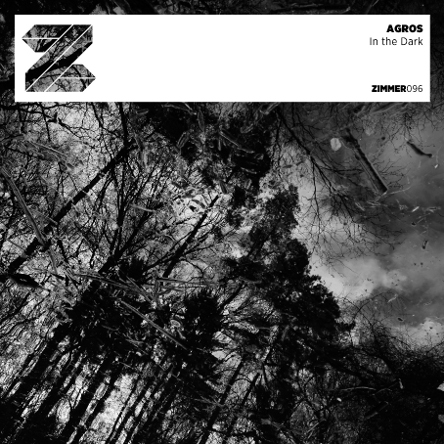Zimmer096 – Agros – In the Dark (Earth)
mp3, 320kbps, stereo, techno, experimental
096.1 – Agros – Nachtwanderung mit Krahe
096.2 – Agros – Ketamine Travel
096.3 – Agros – Friday night in Christiania
096.4 – Agros – Angels and Demons part 1
stream & download -> archive.org
stream & download -> sonicsquirrel.net
stream & download -> last.fm
download ZIP (MP3 | 77MB)
Artwork (909px)
[design: jcbdrzr | photo: psycoded]
Darkness, as polar to brightness, is understood to be an absence of visible light. It is also the appearance of black in a color space. Humans are unable to distinguish color when either light or darkness predominate. In the absence of light, perception is achromatic and ultimately, black. The emotional response to darkness has metaphorical connotations in many cultures.
In terms of physics, an object is said to be dark when it absorbs photons, causing it to appear dim compared to other objects. For example, a matte black paint does not reflect much visible light and appears dark, whereas white paint reflects much light and appears bright. For more information see color.
Light cannot be absorbed without limit. According to the principle of the conservation of Energy, energy cannot be created or destroyed; it can only be converted from one type to another. Consequently, most objects that absorb visible light reemit it as heat. So, although an object may appear dark, it is likely bright at a frequency that humans cannot perceive. For more information see thermodynamics.
A dark area has limited light sources, making things hard to see. Exposure to alternating light and darkness (night and day) has caused several evolutionary adaptations to darkness. When a vertebrate, like a human, enters a dark area, its iris dilates, allowing more light to enter the eye and improving night vision. Also, the light detecting cells in the human eye (rods and cones) will regenerate more unbleached rhodopsin when adapting to darkness.
One scientific measure of darkness is the Bortle Dark-Sky Scale, which indicates the night sky’s and stars’ brightness at a particular location, and the observability of celestial objects at that location.
Artists use darkness to emphasize and contrast with light. Darkness can be used as a counterpoint to areas of lightness to create leading lines and voids. Such shapes draw the eye around areas of the painting. Shadows add depth and perspective to a painting. See chiaroscuro for a discussion of the uses of such contrasts in visual media.
As a poetic term in the Western world, darkness is used to connote the presence of shadows, evil, and foreboding.
The first day of the biblical creation narrative begins with darkness, into which is introduced the creation of light, and the separation of this light from the darkness (as distinct from the creation of the sun and moon on the fourth day of creation). Thus, although both light and darkness are included in the comprehensive works of God- darkness was considered “the second to last plague” (Exodus 10:21), and the location of “weeping and gnashing of teeth.” (Matthew 8:12)
The Qur’an has been interpreted to say that those who transgress the bounds of what is right are doomed to “burning despair and ice-cold darkness.” (Nab 78.25)
In Chinese philosophy Yin is the complementary feminine part of the Taijitu and is represented by a dark lobe.
The use of darkness as a rhetorical device has a long standing tradition. Shakespeare, working in the 16th and 17th centuries, made a character called the “prince of darkness” (King Lear: III, iv) and gave darkness jaws with which to devour love. (A Midsummer Night’s Dream: I, i) Chaucer, a 14th century Middle English writer, wrote that knights must cast away the “workes of darkness.” Dante described hell as “solid darkness stain’d.” //wikipedia
